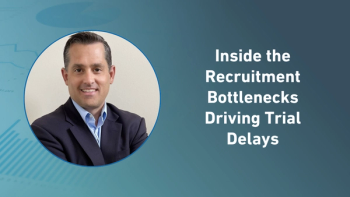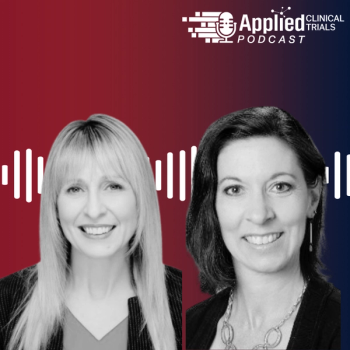
Impact of Accreditation
Why are some contract research organizations, sponsors, and other research facilities not pursuing accreditation?
As reflected on their website, the purpose of the Association for the Accreditation of Human Research Protection Programs (AAHRPP), established in 2001, was to "advance accreditation as a means of ensuring excellent, ethically sound research." Today, accreditation of human research protections is a voluntary process. Although over the years there has been pending legislation that would make accreditation mandatory, this has yet to be passed.
There is one big misconception about AAHRPP: that the purpose of accreditation is only for institutional review boards (IRB). Although the majority of those who have achieved accreditation are IRBs, a very small minority happen to be research centers. According to the AAHRPP website, "AAHRPP accredits high-quality human research protection programs in order to promote excellent, ethically sound research. Through partnerships with research organizations, researchers, sponsors, and the public, AAHRPP encourages effective, efficient, and innovative systems of protection for human research participants."
Since protecting human subjects is a shared responsibility, why aren't more research centers seeking accreditation?
One argument against accreditation: just because an organization is accredited doesn't mean they actually put into practice the policies and procedures they have in writing. While this may be true in some cases, external audits, whether they be conducted by sponsors, CROs, or federal agencies, should confirm the adherence to and compliance with federal regulations as well as written standard operating procedures (SOPs).
Prior to accreditation
When IntegReview was established in 1999, one of the first courses of action was to create SOPs to identify the process for complying with federal regulations regarding the protection of human subjects. Over the course of 12 years, IntegReview's SOPs have been revised and new SOPs have been developed as needed. Many of the changes to procedures were the result of the accreditation process as well as recommendations from pharmaceutical companies and CRO auditors. As a result of client audits, our policies and procedures were enhanced, as was our confidence that we were doing a good job ensuring the protection of study participants.
How we were impacted
When, in 2007, we decided to apply for accreditation, we were told that the process would consume much of our time and resources, which it did. We prepared by establishing a committee that met weekly to review AAHRPP standards and prepare our responses. However, as thorough as we thought our processes were, we discovered there were many details we had not taken into consideration. Examples include our enhanced processes for reviewing studies that include vulnerable subjects and conflict of interest, as well as non compliance. The major impact for us was a strengthening of our human subject protection program. Isn't this the goal of AAHRPP?
We also found that our new study submission forms were impacted as they become somewhat longer. As a result of AAHRPP standards, we were now asking more questions than previously posed. As often happens, when a process changes, it affects more than one procedure. Since we use checklists for processing documents, the checklists required revisions as did other documents, such as letter templates and reviewer checklists utilized by committee members.
An additional positive aspect of accreditation is enhanced training of staff and committee members, which is evident when clients contact us for our opinion because we are accredited. This demonstrates the trust and confidence as well as respect that clients have in accredited entities as well as the trust they have for the accreditation standards and process.
Since accreditation
What we found is that many clients will now only work with an accredited IRB. What has not changed is the number of client audits that are performed. We continue to average the same number of audits each year. On the positive side, the outcome of these audits has changed significantly. We find auditors not only struggle to find non-compliance issues, but their recommendations are minor. Additionally, there was no finding during our last FDA inspection, conducted in 2009.
Earning accreditation certainly does not mean the work is done. It is one step in the process that we must continually strive to improve. Protecting human study participants is a shared responsibility that includes but is not limited to IRBs, sponsors, CRO's, investigators, coordinators, monitors, and auditors.
An ongoing benefit of accreditation is the development of new policies and procedures; an AAHRPP representative is available as a resource. We routinely send new as well as revised procedures to AAHRPP for review and comment to ensure we remain compliant with their standards.
In 2010, we went through the re-accreditation process and found it to be much smoother and less time consuming than the initial application process.
Future
Earning accreditation demonstrates that an organization goes above and beyond the regulations to ensure the protection of human research participants. Accreditation has been one of the biggest industry changers in the last 10 years. However, considering the number of institutions and research organizations that exist, only a small percentage have achieved accreditation. Perhaps it's time to question why contract research organizations, sponsors, and other research facilities are not pursuing accreditation. If clients are only choosing to work with IRBs that have earned accreditation, why aren't their expectations the same for those who are managing and conducting the research?
Lynn A. Meyer, CCRP, is Managing Partner at IntegReview Ethical Review Board, 3001 S. Lamar Boulevard, Suite 210, Austin, TX, e-mail:
Newsletter
Stay current in clinical research with Applied Clinical Trials, providing expert insights, regulatory updates, and practical strategies for successful clinical trial design and execution.






.png)



.png)



.png)
.png)
